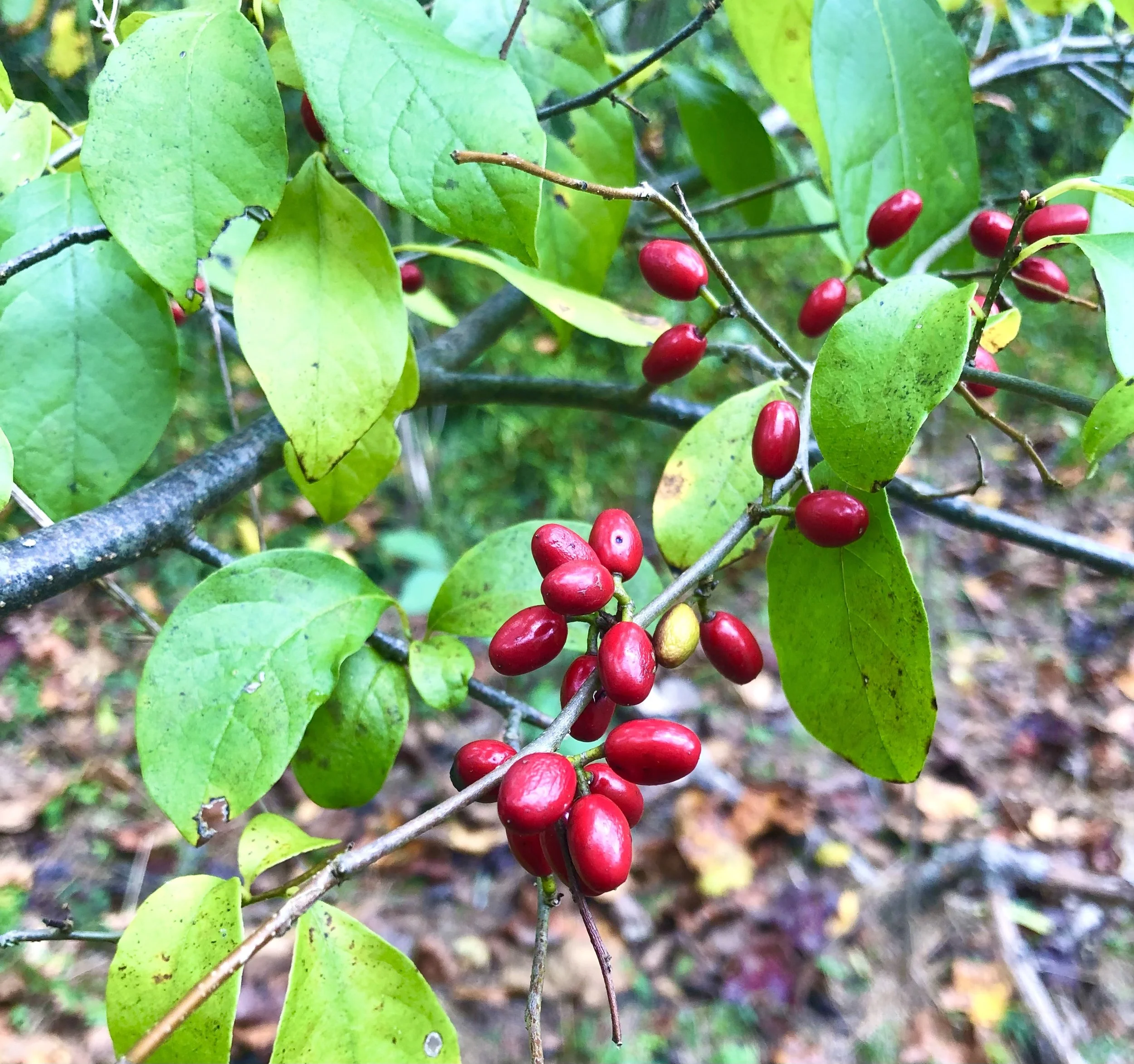Spicebush
Spicebush Flower in early spring. Surgoinsville, TN. Image Credit: Cori Achi
Spicebush- Lindera benzoin
Spicebush is a native shrub in the laurel family (Lauraceae). It can grow about 16 feet high, and is found in rich woodlands, near stream banks, and in moist soils. In the spring, its clusters of bright yellow flowers provide an early nectar source for small pollinators such as bees, flies and ants. The bark is gray and dappled with white bumps known as lenticels. The red fruits are favored by birds.
Spicebush berries, leaves, & twigs. Rogersville, TN. Image Credit: Kanoelani Achi
Spicebush-Edible Parts
The young leaves, twigs and berries/fruit make a very fragrant tea. The dried and powdered fruit is used as an allspice substitute commonly known as “Appalachian Allspice”. The leaves can also be used as a spice substitute and the new bark is pleasant to chew.
Spicebush berries/fruit in a child’s hand. Rogersville, TN. Image Credit: Cori Achi
Many Uses Of Spicebush
The Cherokee used Spicebush for blood disorders, cold, cough, croup, dysmenorrhea, hives, phthisis, swellings, and as a spring tonic.
The Creek used Spicebush to treat pain, rheumatism, for purifying the blood, and for making themselves puke and sweat.
Herbal Benefits: helps with coughs & colds, dysentery, intestinal parasites, bruises, rheumatism, fever, colic, aches & pains, insect repellent, disinfectant, candida, menstrual pain, delayed periods, hives, gonorrhea, syphilis, & flatulence.
Foraged Spicebush leaves and twigs in a basket. Rogersville, TN. Image Credit: Cori Achi
Spicebush- Tea Recipe
1. Steep 15 leaves or a handful of fresh twigs and bark, or both leaves & twigs in 4 cups of boiling water for 15 minutes.
2. Strain if necessary.
3. Serve unsweetened, or with honey or milk.
Sources:
Edible Wild Plants, by Thomas S. Elias & Peter A. Dykeman
Spicebush Herbal Monograph- Spicebush- Lindera benzoin
Spicebush, by Jim Duke- Green Pharmacy- Indications for Herbal Pharmacology The Green Farmacy Garden
Spicebush drying in a dehydrator. Image by Cori Achi





